Iceland: How much things cost & how to visit on a low budget
Since its currency crash in 2008, Iceland had gone from absurdly expensive to somewhat reasonable in cost, and that has prompted thousands of new tourists to stream in to see what all the fuss is about. It’s hard to find a visitor to Iceland who didn’t absolutely love the place, but you won’t find anyone who tells you it’s cheap, so planning ahead is essential. Prices have continued to creep up in 2015 and 2016, so it’s again among the most expensive European destinations.
Many visitors arrive on an Iceland stopover going between North America and Europe, but with very cheap flights to and from Europe it’s becoming popular for adventurous types from all over the continent. In 2013 I spent 9 days in the country, always checking for prices and the cheapest ways of doing things, so below I can lay out how to budget and what to do to keep costs down.
Note: This article was first written in late 2013, but all prices have been updated as of December 2016 to be current through 2017.
Reykjavik vs. the rest of Iceland: Where to go
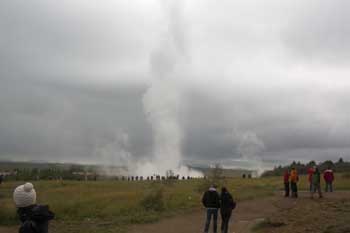
If you have one night or a few nights you are better off taking a bus or renting a car directly from the airport and heading east along the southern coast for some of the country’s best sights. If you have at least a week you’ll want to rent a car and do a lap around Iceland’s famous Ring Road, allowing you to see nearly everything the country has to offer in a neat and organized way.
Iceland accommodation: Hostels, guesthouses, and hotels
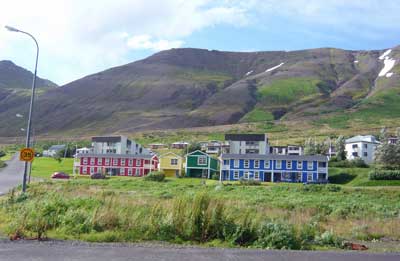
The most common form of accommodation in Iceland is a guesthouse and hostel combination which will have a mix of private rooms and dorm rooms, with shared bathrooms in down the hall. Most of them have fully equipped shared kitchens, so self-catering is at least as popular as eating out while exploring Iceland outside of Reykjavik.
High season (June through August) typical accommodation prices
All prices quoted in US dollars at a rate of about 110 Krona to US$1 in December, 2016.
- Hostel dorm bed: US$34 to US$58
- Single private with shared bathroom: US$85 to US$135
- Double private with shared bathroom: US$118 to US$140
- Double private with en-suite: US$130 to US$320 (and up)
Prices in Reykjavik are a bit higher than elsewhere in the country, but not by much. Prices in the off season are about 30% lower than in high season, but in the slowest months many places close so rates never go much lower than this.
Most Iceland guesthouses are NOT on the normal hotel-booking sites
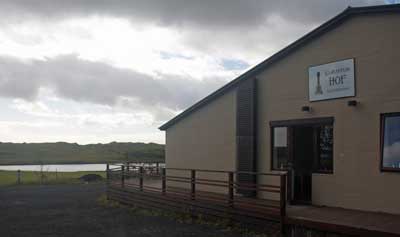
The good news is that when you get to Iceland, the tourism office will give you a directory of almost every guesthouse on the island, and there are other ways of finding these guesthouses and other informal accommodations. Even as of late 2016 you should be able to book a double room (with shared bathroom) for about US$120 per night in most towns in Iceland. If you do a hotel search you might see prices that are double that, but those are in the few formal hotels with 24-hour lobbies and such.
Increasingly, Airbnb and other online rental sites are the best place to find guesthouse accommodation in Iceland. As of only a few years ago, most places would be booked by phone or in person on arrival day, but now more and more places can be pre-booked, at reasonable prices.
Sleeping bag accommodation in Iceland
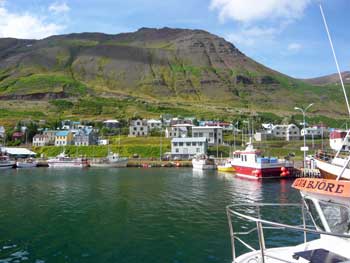
In a ‘sleeping bag accommodation’ (as it’s known in Iceland) you’ll get a bed with a mattress and often a pillow. So with even a cheap indoor sleeping bag, you’ll be comfortable and warm while saving quite a bit of money. For those renting cars, this is a highly recommended strategy.
You can rent sleeping bags in Reykjavik starting at around €12 per week.
Most Iceland attractions are free (the good news)
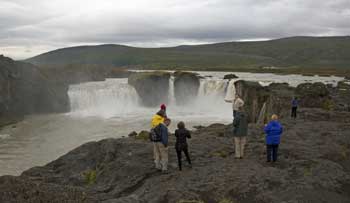
So to see all the glaciers and waterfalls and volcanic beds and other scenic attractions, it’s all free of charge with no admission cost or even parking fees. The larger attractions also have visitor centers where you can get local advice for free as well.
Iceland transportation: Rental cars and buses
Even as a lifetime public transportation fan, I’m very glad I gave in and rented a car to tour Iceland, even as a solo traveler. For the most part the roads are in perfect condition and virtually empty even in high season, so driving couldn’t be easier. Also, the country has stunning vistas every time you turn a corner, so being able to stop in the middle of the road even if there is no room to pullover, is critical.
The buses are modern but also expensive and running on very limited schedules. If you only have enough time to cover the main sights along the southern coast you might buy one of the bus passports that allows you to hop on and hop off, though a rental car is still much better and easier.
Rental cars in Iceland: What you need to know
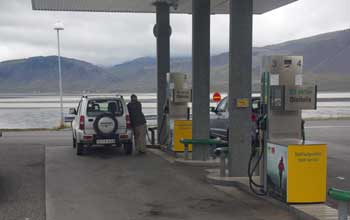
For an extra fee you can pay to reduce that deductible to almost nothing, but the more popular add-on is the Gravel and Glass insurance. For around €10 per day with this coverage you have a zero deductible if the vehicle gets damaged by gravel or if any glass gets broken by flying rocks (or anything else). Unfortunately, many of Iceland’s side roads and even a few of the main roads are covered in gravel, and if you drive at anything above a crawl, there will be some gravel flying around.
Personally, I normally decline add-ons like this but in this case I bought the Gravel coverage after reading a few horror stories in online reviews. I didn’t get any damage that I’m aware of, but the peace of mind was worth a LOT when driving on isolated gravel roads so I wasn’t petrified that I was chewing up the paint job just trying to stay safe on the roads.
Rental cars in Iceland
- 2-wheel drive compact (manual): US$230 per week and up plus add-ons
- 2-wheel drive compact (automatic): US$270 per week and up plus add-ons
- 2-wheel drive mid-size: US$450 per week and up plus add-ons
- 4-wheel drive van or SUV (automatic): US$650 per week and up plus add-ons
Daily rates are about 20% as much as weekly rates, so 5, 6, or 7 days cost the same.
Add-ons
Gravel coverage: US$10/day
GPS (highly recommended): US$10/day
Additional collision waiver: US$10/day
Fuel prices in Iceland
Every gas station in the country has the same prices, which don’t seem to change much. As of December 2016, a liter of petrol is 194 Krona, which is about US$1.75 or €1.63, or about US$7.50 per gallon.
Bus pass prices in Iceland
For a quick day trip from the airport to some local sights you can spend as little as US$90 per person, but for the longer distance buses you’ll spend at least US$130 to US$250 depending on length of time in order to hop on and hop off.
A Ring Road passport will cost around US$400 per person, so for two people it’s no cheaper than renting a car, even after fuel is taken into account, and for 3 or 4 people it’s definitely cheaper renting a car.
Food prices in Iceland
Here’s the thing: sit-down restaurants in Iceland are very expensive by international standards, so there aren’t very many of them. Obviously Reykjavik has many restaurant choices but most smaller towns might have only a few at most. The good news for budget travelers is that fast-food options are more plentiful, and self-catering is even cheaper and easier.
Restaurant prices in Iceland
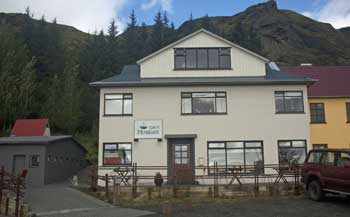
A soft drink, coffee, tea, or even bottled water will generally be between US$3 and US$5 in a restaurant. A pint of beer will typically start at around US$7 at even the cheapest places, while wine and spirits cost even more.
Fast food prices in Iceland
In Reykjavik and larger towns (which might only have 2,000 residents) you’ll have many fast food options including Subway, Quiznos, and usually a few local burger or hot dog places. Prices for a sandwich at Subway are about US$6 for a 6-inch and US$10 for a foot-long, so they aren’t too much higher than elsewhere in Europe, and are sure cheaper than proper restaurants.
More good news for drivers is that many gas stations around the country have fast food restaurants built in, so it’s fast and easy to pick up a sandwich or hot dog by the side of the road.
Hotel breakfast prices in Iceland
Many hotels and guesthouses in Iceland serve breakfast, but it’s almost always at an extra fee, and many don’t serve anything at all. If a breakfast is offered it will typically cost between US$12 and US$15 for a buffet of cereals, bread, cold cuts, cheeses, hard boiled eggs, juices, coffee and tea, and perhaps some pastries.
Making your own self-catering breakfast will be cheaper, but since you can stuff yourself for a flat fee at the breakfast buffets it might be worth it to save yourself the hassle of shopping the day before and making breakfast in the morning.
Self-catering in Iceland
The best budget tip for Iceland is to buy and prepare your own food, and you can literally do it for all three meals per day if you prefer. Since Iceland has almost no national “must-try” dishes, you can buy and prepare your own food without worry about missing anything meaningful.
Nearly every guesthouse in Iceland has a shared kitchen where at least half the guests will be storing and preparing breakfasts and even dinners. They have refrigerators, coffee makers, electric kettles, pots, pans, dishes, and silverware, as well as salt and other spices, so you can buy just the food and you’ll be able to prepare it all.
Supermarket prices in Iceland

For example, you can buy a 400 gram (1 pound) block of Havarti cheese for around US$5, but a similar looking cheese right next to it on the shelf might be US$15 for the same amount. The same is true for lunch meats. Sliced ham can be US$3 for enough to make 2 sandwiches, but sliced roast beef might be US$10 for the same amount.
Some sample prices in the cheaper Iceland supermarkets
- Sliced white bread: US$1.70 per large loaf
- Fresh baguette: US$1.50 to US$2 each
- Hot dog buns: US$2.50 for 5
- Pork hot dogs: US$3.50 for 5 large hot dogs
- Cheap Havarti or other local cheese: US$5 for 400 grams (1 pound)
- Imported cheese: US$10 to 15 for 400 grams (1 pound)
- Sliced ham for sandwiches: US$5 for 400 grams (1 pound)
- Sliced roast beef for sandwiches: US$12 for 400 grams (1 pound)
- Pasta: US$1.50 for .5 kilogram (1.1 pounds)
- Pasta sauce: US$3 for a .5 liter jar
- Ground beef: US$5 for .25 kilos (half pound)
- Bake-at-home pizza: US$5 to US$7 for one person
- Bag of tortilla chips for 2 or 3 people: US$2
- Jar of salsa for those chips: US$3
- Breakfast cereal: US$3 to US$5 per box
The prices above are for many of the cheaper and more common things that budget tourists buy in Iceland. As mentioned above, if you want something exotic and imported, it might cost double or triple what you pay at home, if you can find it at all.
Alcohol prices in Iceland
In restaurants and bars throughout the country you’ll pay at least US$8 for a pint of beer, and at least US$10 for a glass of wine or a simple cocktail. If it’s a fancy place you’ll pay even more, of course.
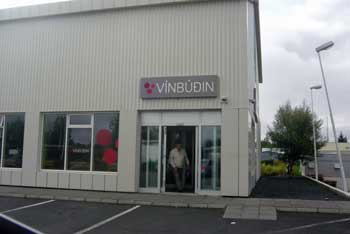
Here are some typical prices for alcohol:
- 330ml can of local beer: US$2 to US$3
- 500ml can of local beer: US$2.50 to US$4
- Cheapest bottle of wine: US$10 to US$12
- .7L bottle of off-brand vodka: US$30
- .7L bottle of mid-level brand vodka: US$50
Bottom line on doing Iceland as cheaply as possible
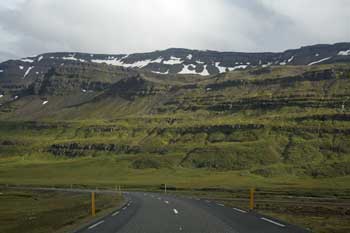
Whether you are going to get dorm beds or private rooms, as long as you will have your own wheels it’s worth renting a sleeping bag. You get the same bed and same services for about US$10 less per night, which will pay for a week’s rental of an indoor sleeping bag.
Unless you are a terrible driver or afraid to drive, it’s highly recommended to rent a car instead of trying to get around using buses. Once you get there you’ll see that having 100% flexibility with a car compared to almost no flexibility with a bus, is worth a LOT.
Instead of trying to be cheap with transportation, be cheap with self catering food and drinks for yourself. If you have at least a small group of people you’ll be able to have a party each evening in or near the shared kitchen of your guesthouse, and it will be more lively than any restaurant in town.

Hey Roger !
What a great site! You are THE source of info for us “Non Icelander”
I am planning a stay in this beautiful place, don’t know what year, but in September or October
I am looking for a 5 to 7 days stay, w/ rented SUV, probably a 1500 Km 5 day road trip
We will be 2 adults in the early 50’s
Now, I have read that the south is quite the best to tour, what do suggest as must see places?
Also, the place with a private room, suggestions?
And I really enjoy photography.
Should be get special gear as clothing and shoes – boots?
We’re from Montreal, Canada we know about winter conditions 😉
Thanks!!
Francois,
I’m very happy that you found this site and I wish I had more Iceland content, but so far I’ve only done one trip there and I’ve used contributions from other helpful visitors who have sent me new information. It’s true that the southern coast of Iceland has the most sights, but it’s also got the most visitors. For that reason I’d highly recommend doing the whole Ring Road and trying to visit for 7 or even 8 days. On my own trip I spent two nights in Reykjavik (which I actually found fairly disappointing) and then headed north to do the Ring Road in a clock-wise fashion. There is excellent scenery ALL around the island, and in many ways those first 4 days I spent until I reached the southern coast were even more magical because there was almost no one out on the road. I went at the end of August and beginning of September, by the way, and by the beginning of September the crowds are getting much smaller.
As far as actual sights I’d recommend getting the Lonely Planet Iceland a month or two before you go. That’s what I used (on my iPad) and it is great at pointing out all of the best sights around the Ring Road or anywhere else on the island. Normally I’m pretty good at remembering the names of the most dramatic sights, but the Icelandic names are so long and hard to remember that I remember almost none of the names.
If you get a 4WD vehicle you’ll be able to go on more of the gravel roads and into the interior of the island. It’s recommended for normal rental cars (which are much cheaper) that you mostly stick to the highways and drive at low speeds on some of the gravel roads, but with 4WD you can go just about anywhere.
As far as clothing and shoes you’ll want good hiking boots because there are lots of dirt and gravel trails that go to some of the waterfalls and other sights. And if you bring warm layers you should be fine. Iceland actually isn’t insanely cold because you’ll spend most of your time near sea level. I hope this helps and let me know if you have any other questions. -Roger
Hi Roger,
You article is great. My bf and I are going to Iceland for 3 days at the end of December. My hotel is closer to the airport than Reykjavik. Based on your article we are going to rent a car. I was thinking taking some of those day tours but with hotel pick up it is way more expensive and I do not even know if they come to my hotel. What do you recommend to visit if we are going to be driving? If weather is bad, what king of tours should we take? Also, any advice when you rent a car, dos and donts?
Thanks in advance.
Lorena,
Sorry for the slow reply as I just got off a cruise and the ship had dreadful wifi. If you can afford a rental car I’d highly recommend it. Iceland is really amazing if you have your own wheels, and the public transportation is expensive and doesn’t go to many key places. In three days I’d focus on the southern coast between the airport and Hofn, as it’s dense with great things to see and do.
As you know, the days at the end of December will be very short so the sun will come up maybe around 10am and it’ll be dark again by 3pm, so you’ll have to plan your limited sightseeing well. I’d get a Lonely Planet Iceland and read about the sights along the Ring Road in the south. If the weather is bad you might just spend time in Reykjavik. It’s not nearly as interesting as the amazing scenery, but at least it’ll be filled with people and it has some decent indoor sights.
There are some local car rental companies that offer good deals, but I tend to go with the major companies because so much can go wrong. You should be able to get a relatively good deal that time of year, and Iceland makes car rentals come with some insurance, so that is one reason the prices seem high. You might be able to see the Northern Lights this time of year, but aside from that it’s not a really popular time to visit because of the limited daylight. I wish I had more advice, but I’m sure you’ll really enjoy it. -Roger
Hi, I am thinking of going to Iceland in Feb 2019 and was thinking of hiring a car, how will the roads be with all the snow, are they all accessible?
Nicky,
This might be a better question for something like the Lonely Planet forums because I haven’t been there in February. My understanding, for what it’s worth, is that the Ring Road is usually clear all year round and doesn’t get much snow at sea level and when there is snow it gets cleared pretty quickly. At the same time, the roads in the interior and especially those that go into elevations are mostly unpaved and you definitely need a 4-wheel-drive vehicle at any time of year. Sorry I can’t help more and I think you can find the information elsewhere. I hope this works out because hiring a car is definitely the way to see Iceland as long as it’s safe. -Roger
Thank you so much for all your good language informations regarding travel to Iceland. I am all inspired by your knowledge now I am very much clear to d9 it all by myself for a great adventure.
Thank you once a again.
Phajo
Hey Roger,
Great article and advice . I am traveling to Iceland from Aug 25th (early morning ) -Aug 29th, 2018.( Returning to Canada in the afternoon), have total of 4.5 days and 4 nights ..was hoping to self drive the Ring Road. Is this Doable and what advice would you provide as to the recommendation for lodging ?
Thank you
Anj,
Thank you. The shortest time frame I would recommend doing the Ring Road in is 6 nights, although it could be done in 5 nights if you choose to almost never stop along the way. It’s only 1,300 kilometers but you have to drive slow on probably half of it because it’s winding roads or gravel or other challenges. And the scenery is so amazing that you’d want to stop often.
With only 4 nights I would recommend driving as far as Hofn along the southern coast and then slowly driving back over the next few days. The southern coast has the most dramatic sights that are the closest together. For accommodation you can check hotel-booking sites and hostel sites as well as airbnb. It really shouldn’t be a problem. Let me know if you have any other questions. -Roger
Great article.
Though, as I surfed around the guidetoiceland site, I haven’t found prices for renting cars at such a good value as you said. Is there any other car rental that you would recommend?
Thank you!
Jerry,
I think car rentals in Iceland are at peak prices from June through mid August. I went in late August and found a pretty good deal through Sixt. There are a few local companies that seem to offer pretty good rates that aren’t on the meta-search sites, but it also seems a bit risky to rent from a small, local company. Sorry I don’t have better information for you and I will update those car rental prices in the article soon. -Roger
Hi Roger,
My wife and two children are heading over first week of August for a first time trip. You have great info. on this site which makes me ask, are you available to assist as a travel agent or is there one you would recommend?
Thanks
Joe,
That is nice of you to say, but I currently just focus on answering questions in comments on this website. I don’t have a travel agent I recommend and I haven’t used one myself in ages. I’ll be happy to answer questions if you have them though. -Roger
Hi Roger,
This is a really lovely resource, thank you so much for all of your thoughtful responses! My husband and I are going to be in Iceland for the first time on a brief stopover in April, between Seattle and Barcelona. We really have only one full “non travel day”, so I had to be a little regimented in planning, but I was hoping for a bit of advice. We arrive early morning and I have made arrangements for a rental car at the airport, as well as booking an 11am entry slot at the Blue Lagoon to decompress. Our lodging for the night is in Grindavik, and we have the next day free before we have to return the rental car at 9:30pm, with a 9am flight the next day. Obviously, we wanted to see as much of the unique landscape and scenery as possible in the short time we have, so that said, do you have any “must-see” stops for a single driving day around the vicinity of Grindavik/Keflavik? Thank you!
Julia,
You are going to love Iceland. The best and most interesting scenery is along the south coast, between Reykjavik and Hofn. One of the most dramatic sights is Jökulsárlón, which is an iceberg lagoon. Unfortunately that is over 5 hours from the area where you’ll be staying so getting there and back in one day might be pushing it. There is an amazing national park called Skaftafell, but that’s also over 4 hours from where you’ll be staying. That area around the big airport has some interesting lava fields around it, but otherwise it’s quite plain compared to the rest of the island. If you could I would cancel that hotel reservation and drive to Vik or perhaps even to Hofn on that day, which would put you in the best area the next morning for sightseeing and heading back to the airport. You could go to the Blue Lagoon on your way back, or go when you get there and drive from there to Vik or Hofn.
In my opinion the best sights are on the south coast between Hofn and Vik. There are always the “Golden Circle” sights around Reykjavik, but I found those quite disappointing (and crowded) compared to the others. Those Golden Circle attractions are good for someone with only 10 hours to spend on a layover, but with a couple days like that I would go east. I hope this helps. Let me know if you have any other questions. -Roger
This site is AWESOME! I feel so lucky to have found it, Thank You! My husband and I are going for 9 days late September. Since alcohol seems to be scarce, if I buy at the airport, is it OK to bring it for picnics and viewing stops? OK to have a glass of wine walking around the city?
Eneida,
I’m honestly not sure about the “open container” laws in Iceland, but I suspect they would be pretty mellow about it. At the picnic areas and viewing stops you’ll usually have no official supervision, and in late September you’ll probably literally be the only people there at any given time except along the south coast. But I would bring a flask or plastic bottle and pour my drink into that if I was going to literally drink in public. You don’t want to be having an open bottle of Johnnie Walker at a picnic area when there might be kids at the next table.
As for wine walking around the city, I think if you poured it into a plastic cup you’d be fine, and except for Reykjavik there aren’t really any “cities” to walk around in. You’ll be amazed at how few people you encounter in general once you leave the capital district. Let me know if you have any other questions. -Roger
Hi Roger, great information and advice. I will be going in mid April and wanted your feedback if you think my itinerary is too ambitious. We arrive morning April 19 and depart afternoon of April 26. The first night will be in Reykjavik to get over some jet lag. On April 20, we head out on the road. In addition to the Ring Road, I wanted to squeeze in the Snaefellsnes peninsula. We plan to spend one night in each of the following locations: Stykkisholmur; Akureyri; Egilssatoir; Hofn; Vik (Hella); Reykjavik (last night). Do you think it’s doable in the time I have in Iceland? Thank you, Alice
Alice,
On my 7-day Ring Road trip I went a little out onto the peninsula for my first night, and then I was able to see it more the following morning as I drove away. I think your itinerary is otherwise exactly what I did, except I had one more night between Vik and Reykjavik, but that was mostly because I drove so much those first few days that I was ahead of schedule. In other words, I think your plan looks great and is doable, and the only tricky part will be getting a very early start on that first day so you have time to cover that ground. I’m sure you’ve researched the distances and they aren’t too much, but still driving in Iceland can be slow at times. In some cases you’ll go through a gravel road, and you have to drive slow on those or you’ll destroy the front of your rented car, and in other cases you are driving along a coast with a lot of switchback so you can only average maybe 30 MPH (50 KPH) because you have to slow down every 30 seconds. Another thing to consider is that the scenery there is so amazing that you’ll want to pull over or just stop the car quite a bit along the way, and that’s really the whole point of driving the Ring Road. If you just bear down and drive straight through you can make better time, while missing many little waterfalls and other lovely sights just off the road.
And again, I did go quite slow those last few days. You can drive from Hofn to Reykjavik in about 6 hours, and those are the best highways on the island, but the south coast is also packed with the most worthwhile sights. So your only real issue will be that you probably won’t have time to stop at as many places as you’d like on those last two days, but you’ll still have an amazing time.
Lastly, you might even consider staying somewhere else on your last night. Reykjavik is nice, but I think it’s a real dud compared to most other major European capitals. More importantly, the scenery everywhere else is just amazing, so it’s kind of a shame to spend a lot of time in the most expensive and least charming part of the island. I rented my vehicle in Reykjavik and returned it to the agency at the airport for no additional fee. The airport is about an hour’s drive from the city and there is nothing in between them but lava fields. Another advantage of returning your car at the airport is that you can easily stop at the Blue Lagoon, which is close to the airport. You can park and walk into the Blue Lagoon for free to look around, or if you have time, the desire, and the money, you can pay to go in and swim and all of that. It’s a very cool place. Let me know if you have any other questions. -Roger